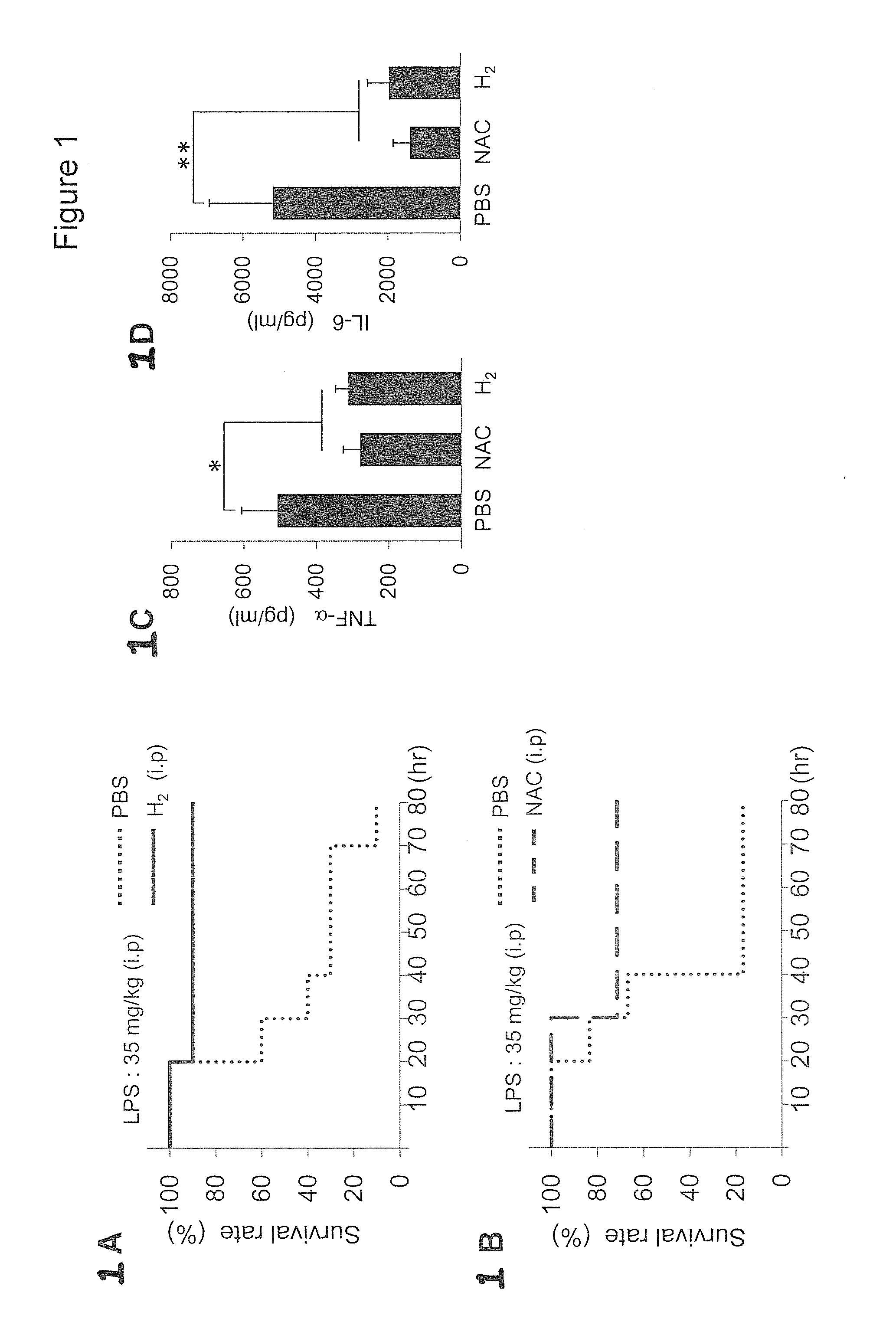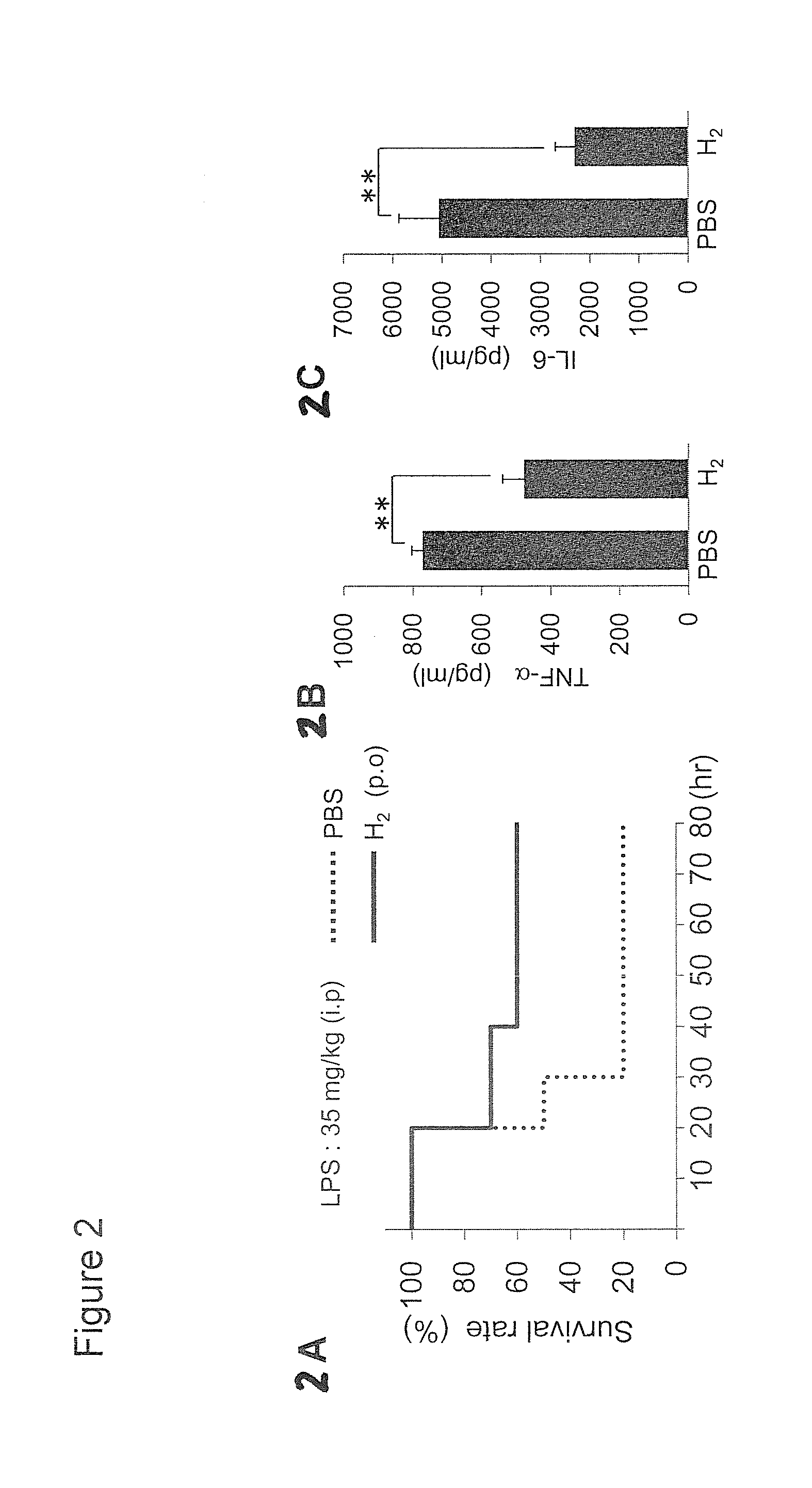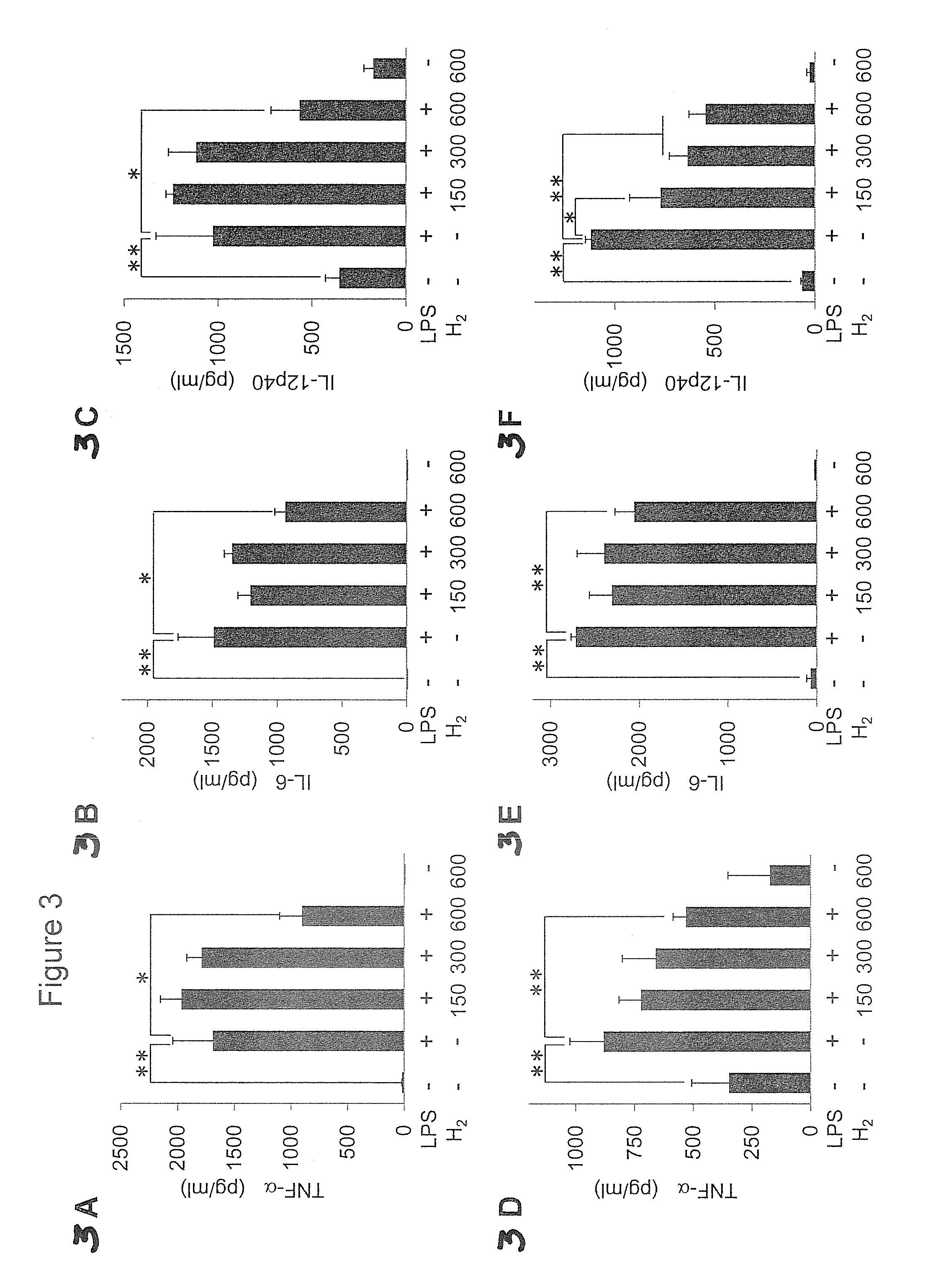Mapk inhibition by h2
a mapk and h2 technology, applied in biochemical apparatus and processes, instruments, biocide, etc., to achieve the effect of reducing the basal level of phosphorylation
- Summary
- Abstract
- Description
- Claims
- Application Information
AI Technical Summary
Benefits of technology
Problems solved by technology
Method used
Image
Examples
example 1
[0089]Systemic Administration of H2 Dissolved Water Protects Mice from Lethal Endotoxin Shock Concomitant with the Suppression of Serum Proinflammatory Cytokines.
[0090]To investigate the effect of H2 on inflammation, the efficacy of systemic administration of H2 dissolved water (inter peritoneal: i.p.) was tested on LPS-induced endotoxin shock induced in C57BL / 6j mice. The group of mice that received control PBS without H2 showed the survival rate of 40% at 30 hours after systemic injection of LPS (35 mg / kg, i.p.) and only 10% of the mice survived at the end of monitoring period (80 hours). However, the survival rate was increased to 90% by systemic injection of H2 (i.p.) at 80 hours after LPS challenge (FIG. 1A). As a control anti-inflammatory reagent, NAC, one of the most commonly used ROS inhibitors, was administrated to the mice received LPS injection. The survival rate of mice treated with NAC was 70% at 30 hours after LPS injection, and the final survival rate monitored at 80 ...
example 2
[0091]H2 Attenuates the LPS-Induced TNF-a and IL-6 Productions from Innate Immune Monocyte Linage Cells.
[0092]It is well documented that innate immune monocyte linage cells, such as macrophage or dendritic cells, are the prominent cellular sources of inflammatory cytokines in the context of endotoxic shock. Since H2 down-regulated the TNF-α and IL-6 production in the mice induced of lethal endotoxin shock (FIGS. 1 and 2), it is plausible that H2 can act on innate immune monocyte lineage cells to suppress their production of LPS-induced proinflammatory cytokines such as, TNF-α and IL-6. H2 dissolved in culture medium suppressed the TNF-α and IL-6 production from both BMMs (FIGS. 3A, 3B) and DCs (FIGS. 3D, 3E) in response to LPS stimulation. In addition, H2 also suppressed the IL-12p40 production inform LPS-stimulated BMMs as well as DCs (FIGS. 3C, 3F). These in vitro results demonstrated that H2 can suppress inflammatory responses by acing on innate immune monocyte lineage cells. The...
example 3
[0093]H2 Selectively Reduces Hydroxyl Radical Induced by LPS-Stimulated Macrophages.
[0094]The effect of H2 on ROS production in BMMs stimulated by LPS was monitored. Both H2 and NAC suppressed the LPS-mediated induction of hydroxyl radical as monitored by the increased level of HPF (FIG. 4A). On the other hand, LPS-mediated induction of fluorescence from DCF which react to either superoxide, H2O2, or hydroxyl radical, was not affected by any concentrations of H2 tested (FIG. 4B), whereas NAC remarkably inhibited the fluorescence conversion from DCF. These results indicated that H2 can only suppress the most robust ROS, i.e. hydroxyl radical, while NAC suppress all three major ROS, i.e. superoxide, H2O2, and hydroxyl radical.
PUM
 Login to View More
Login to View More Abstract
Description
Claims
Application Information
 Login to View More
Login to View More - R&D
- Intellectual Property
- Life Sciences
- Materials
- Tech Scout
- Unparalleled Data Quality
- Higher Quality Content
- 60% Fewer Hallucinations
Browse by: Latest US Patents, China's latest patents, Technical Efficacy Thesaurus, Application Domain, Technology Topic, Popular Technical Reports.
© 2025 PatSnap. All rights reserved.Legal|Privacy policy|Modern Slavery Act Transparency Statement|Sitemap|About US| Contact US: help@patsnap.com



